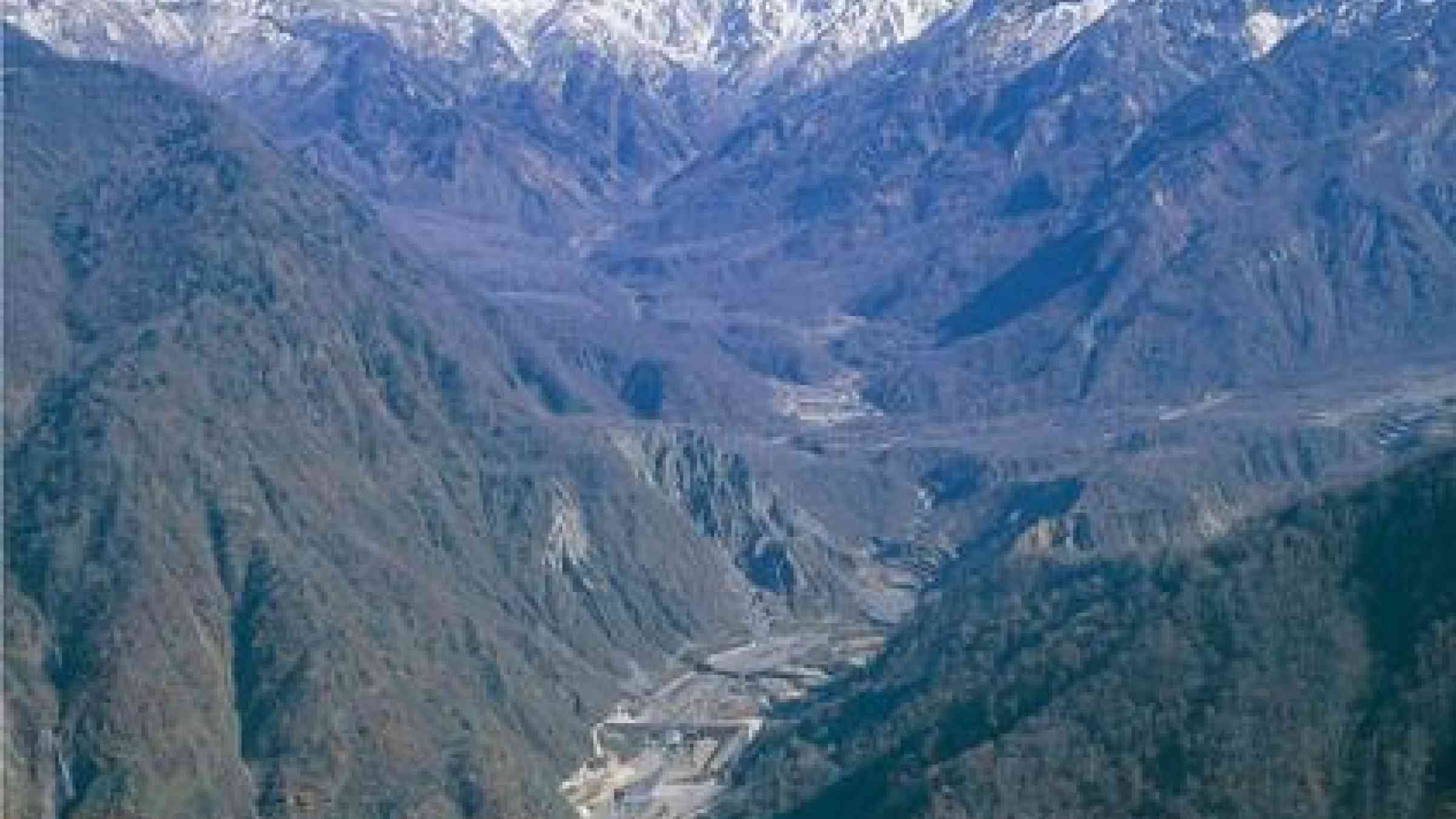Samurai protects his people… from floods

INCHEON, 13 April 2015 – A 16th century Samurai has left a powerful legacy on the floodplain as well as the battlefield in one of Japan’s most beautiful yet hazardous regions.
In the 1580s, during Japan’s Tensho Era, Samurai Narimasa Sassa constructed a levee called ‘Sassatei’ to protect the people of Toyama City from the mighty Joganji River.
Samurai Sassa understood the wisdom of working with rather than against nature. His innovative approach began a proud history of disaster resilience that continues today in the Tateyama Caldera area that combines dramatic scenery and potential for natural hazard.
The Joganji River descends 3,000 metres in 50 kilometres. It boasts Shomyo Falls – Japan’s biggest – which have a drop of 350 metres. The surrounding rugged terrain receives annual precipitation of over 5,000 millimetres. Snow drifts can reach eight metres.
In 1664, almost a century after Samurai Sassa’s initial work, the Feudal Lord of Toyama, Toshitomo Maeda, added another layer of flood protection by planting a forest along the river bank.
However, in April 1858, the Hietsu Earthquake literally changed the ground rules in the uplands above Toyama: a natural dam was formed but it was prone to bursting and unleashing debris-choked floodwaters on the city below.
Local leaders recognized their city faced a new, bigger challenge to prevent floods. They combined local knowledge with international expertise. Most notably, the Dutch civil engineer Johannis de Rijke spent 30 years assisting in a number of works here and across Japan. Spending on protection measures increased rapidly, hitting a peak of 81% of the Toyama Prefectural budget in 1891.
The current system of ‘Sabo Dams’ began to be developed in the 20th century. The literal translation of Sabo from Japanese means ‘sand protection’. In engineering practice, Sabo has come to mean erosion and sediment management. Sabo dams have become a global example of how to protect populated areas and livelihoods from the potentially devastating effects of surging debris and floodwaters.
The impressive stepped structure of dam works evident today was overseen by the Director of the Tateyama Sabo Work Office, Masao Akagi. He blended technology learnt directly in Austria with traditional Japanese hillside work that used the terrain and geological features as allies not enemies. Examples of this approach include training the water towards bedrock on the other side of rivers to dissipate energy.
Today, the main Shiraiwa Sabo Dam is a symbol of that ‘best of both worlds approach’. Its earthquake-resilient structure is the world’s first hybrid Sabo dam that combines concrete and earthen features – mostly covered with greenery – with a checkboard frame and dykes to induct water to the bedrock.
Mr. Akagi became known as ‘the Father of Sabo’. A World Heritage Symposium in Toyama in 2013 heralded the dam as “an epitome in modern disaster prevention technology … a masterpiece of sustainable erosion control measures”.
Today, the Senior Director of the Sabo Sediment Control Division of Toyama Prefectural Government, Mr. Shusaku Shiiba, said the region, with a population of one million, still seeks to combine memory, commitment, technology and partnership to keep the population safe.
It was a message that he proudly shared with delegates at last month’s Third UN World Conference on Disaster Risk Reduction, in Sendai, Japan.
“Toyama is the birthplace of modern Sabo technologies, which are now practiced worldwide. These technologies were developed through the hardship of sediment-related disasters in the past,” Mr. Shiiba said.
“Sabo technologies have protected lives and properties in the lower reaches and have also conserved trees and forests as well as contributing to the recharging of groundwater.
“In Japan people have learned the relationship between mountains and rivers and have taken action to preserve the water resource areas for centuries.”